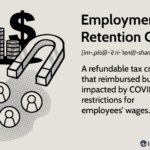If you are a small business owner, there are some things you need to know about the 2023 qualifications. In fact, you may be eligible for a partial suspension of your business operations, or you may be able to take advantage of tax relief for your employees. You may also be able to take advantage of exemptions for trades or businesses that have received a PPP loan.
Eligibility for a partial suspension of business operations
If your business is affected by a governmental order, you may qualify for the Employee Retention Credit (ERC). The ERC is a refundable payroll tax credit designed to help employers retain workers during pandemics or other unforeseen events.
Unlike the ACA, the ERC does not require an employer to be in the business of providing goods and services. However, it does require an employer to experience an order, which can be quite complex. You must prove that the governmental order has more than a nominal impact on your business operations.
A partial suspension of business operations is the equivalent of an order limiting work hours or restricting the sale of certain products or services. A full suspension of business operations occurs when an employer is ordered to close all or part of its operations.
In addition to a governmental order, a partial suspension of business operations could also be the result of an employer's modification of its business practices. For example, a restaurant with an on-site dining service that represented 30% of its total gross receipts in a particular quarter may be required to stop serving the public. It can then continue to sell its wares through delivery or carryout.
Depending on your jurisdiction, there are a number of governmental orders that can affect your operations. Some of these include orders for limited or no travel by employees and orders limiting group meetings. Other governmental orders can limit the amount of time your business can operate or require it to close for certain purposes.
Regardless of the type of governmental order that affects your operations, you should keep a copy of the applicable order. This will allow you to identify when the order applies, as well as when your business operations may be considered suspended.
To be eligible for the Employee Retention Credit, you must have an order from a domestic or foreign government to either suspend or partially suspend your business operations. Moreover, you must be able to demonstrate that the governmental order is the most significant factor in your business operation.
Restrictions for PIs who were part of an application which was rejected in the first stage of evaluation
The European Research Council has some of the best and brightest researchers in the world, so it's no surprise that they have some rules of the road. To make sure that all the winners get a fair shake, they've enlisted the aid of the Office of Compliance. They've also put together an ad hoc team of sage senior administrative staff who know a thing or two about grant awarding. These smart folks are the ones who can tell you if a proposal has been well thought out and is on the radar of ERC's top dogs.
The OCC is also home to the Office of Quality Assurance, a division that keeps tabs on the labs with the most teeth and tiniest budgets. As such, the OCC has an eye on the newest and greatest drugs that have made it out of the laboratory doors. Likewise, the OCC has a good feel for what's not working, and who knows, they've got a hankering to improve the shitboxes of the shitboxes. So if you're looking for a way to stand out from the crowd, the OCC is your best bet for a new or better job. For more information on what they're up to, visit the website. Regardless of what your cynics are telling you, the OCC is a wonderful organization that genuinely tries to do the right thing, and they've been doing so for the last two decades. If you're considering a research position at the OCC, be sure to check out the site's “Jobs” page, as well as the OCC's “Do You Want to Know?” page. Or, better yet, just send a quick email! We'll answer your questions as soon as possible. Oh, and if you're interested in an OCC career opportunity, you can also sign up for our email list!
Exclusions for trades or businesses who received a PPP loan
The Paycheck Protection Program (PPP) is a financial support lending program for small businesses. It was established in the Coronavirus Aid, Relief, and Economic Security Act (CARES) and is administered by the Small Business Administration (SBA). This program was designed to help borrowers meet payroll expenses, and offers up to $349 billion in forgivable loans to small businesses. However, PPP's reach did not extend to the entire US small business sector. In fact, data shows that only 76 percent of businesses in the United States participated in this program.
The SBA's data shows that more than half of all PPP loans went to businesses with fewer than 500 employees. This is likely because many small businesses did not take out PPP loans, and some of them were discouraged from doing so. A significant share of the loans also went to businesses that had no employees.
Other sectors that received a large number of loans included the manufacturing and services sectors. In addition, the transportation and warehousing industry saw a huge increase in employment from the previous year. There were also a high concentration of PPP loans in health care, retail trade, and construction.
The accommodation and food services sector was exempt from the 500 employee requirement. However, they were granted 140 percent of their 10-week payroll. These companies also received 92 percent of the loans.
The motion picture and video industry was also granted a significant portion of the PPP loans. The industry's average loan size was $58,645 for each small business. Another industry that received a large amount of PPP loans was the information sector.
Many other sectors received a small number of loans, including utilities and professional, scientific, and technical services. Despite these sectors' relatively low amounts of loans, the average amount is not a good indication of the size of the entire PPP program.
Whether the PPP program reached all small businesses depends on the specific exclusions. For instance, certain groups of businesses may not have qualified for the First Draw PPP Loan. Furthermore, there are some business categories that are not eligible for the Second Draw PPP Loan.
Tax relief measure for employers and employees
If you have a business that has been hit by the coronavirus, the Employee Retention Credit is an option for you. It allows you to claim a tax credit of up to 50% of qualifying wages paid to your employees during the 2021 calendar year.
This is a fully refundable tax credit. You may apply for it for wages that you paid to your employees from March 12, 2020 through December 31, 2020. The maximum amount you can receive is $21,000 per employee.
As part of the American Rescue Plan, the ERC was expanded to include small employers. Small employers are defined as those with fewer than 500 full-time employees. They can receive ERC on all wages that they pay their employees during the first, second, third, and fourth calendar quarters of 2021.
There are two main ways to calculate the ERC. One way is to count all of the wages that your company pays its employees. Another is to use the safe harbor method.
To qualify for the ERC, you must have a significant decrease in your gross receipts during a single quarter. For example, if your business has a 20% decline in gross receipts during the third or fourth calendar quarter of 2021, you will qualify.
To claim the ERC, you must submit an application to the IRS. There are various requirements and forms that you must fill out to submit the application. In addition, there are processing times that can be very long. Some refunds can take up to 18 months to be approved.
Before submitting your ERC tax credit application, you should consult an experienced tax or legal advisor. Also, there is an IRS audit statute of limitations of five years for the third and fourth calendar quarters of 2021.
Once your ERC tax credit application is reviewed and approved, it will be applied to any future payroll taxes. However, you can only claim the ERC on qualified wages. Similarly, wages that could count towards eligibility cannot be used in more than one program.
Although the ERC is not the only pandemic-related relief available to businesses, it is a great opportunity. It can be helpful in retaining key employees during a difficult time.

















